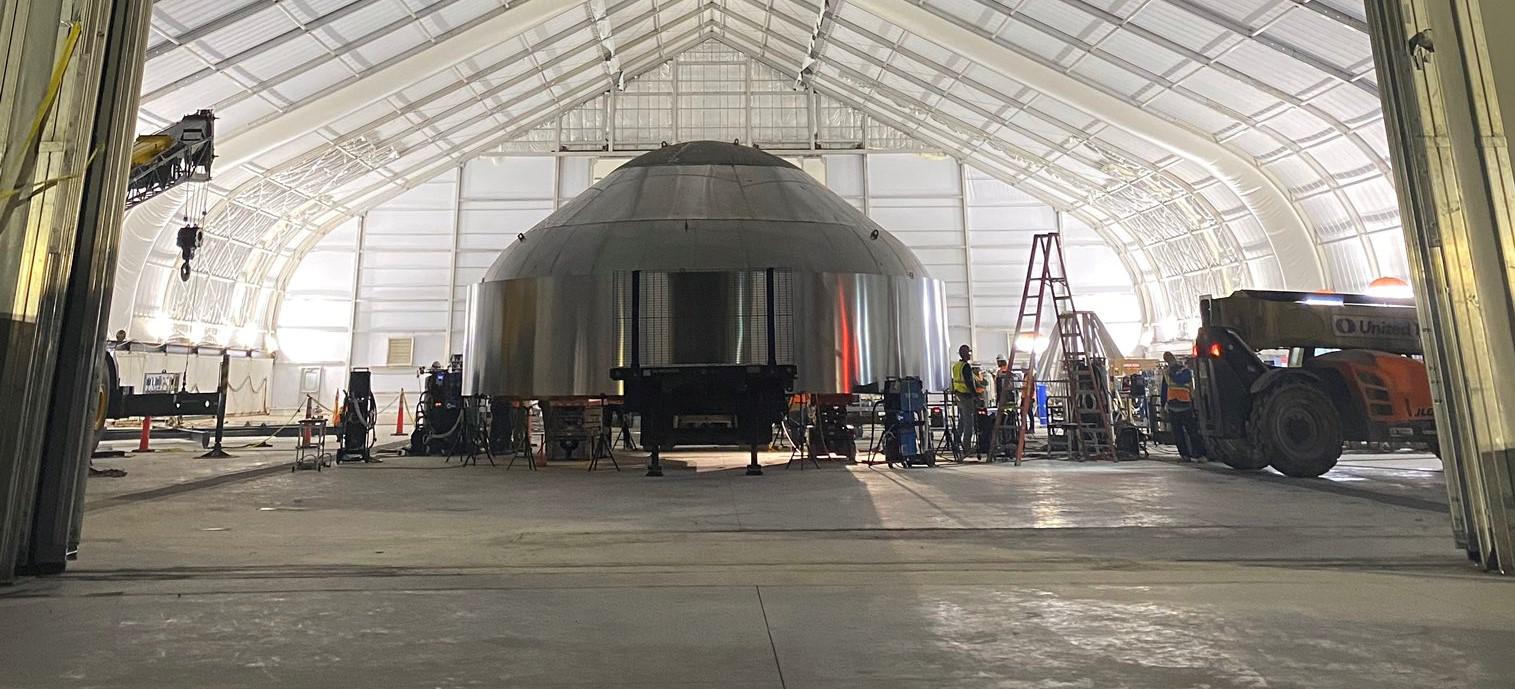
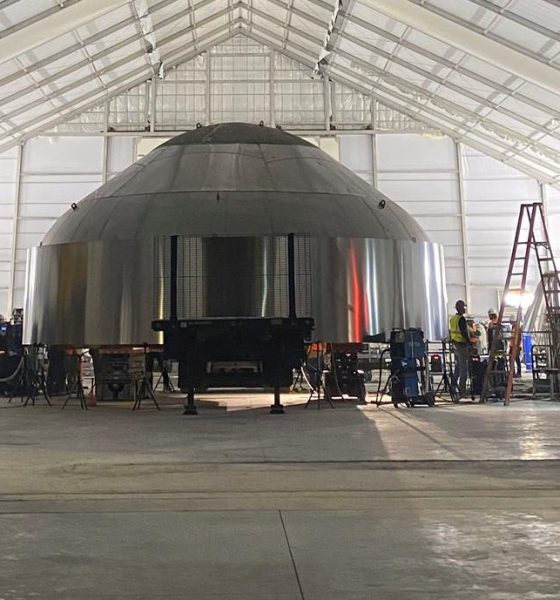
News
SpaceX Starship factory churning out new rocket parts with Elon Musk's help
SpaceX’s South Texas team of Starship engineers and technicians – including CEO Elon Musk himself – are working around the clock to manufacture hardware that will likely become the company’s next Starship prototype in the near future.
Over the last few days, SpaceX has made quick progress churning out shiny steel rings and wrapping up propellant tank domes – the next round of full-scale Starship hardware. To better build the first flight and orbit-capable prototypes, not to mention hundreds or even thousands of Starship spacecraft and Super Heavy boosters in the years to come, SpaceX teams and contractors have spent the last two months aggressively expanding the company’s Boca Chica, Texas facilities. In fact, the very same company that built Tesla’s newest tent-based Model 3 assembly line – Sprung Instant Structures – has erected part of a massive, new Starship factory.
Finally giving the company’s grizzled South Texas team a large, climate-controlled space to work from, CEO Elon Musk has also been spending more and more time at SpaceX’s upgraded Boca Chica facilities. Most recently, the executive gave Twitter followers the first official glimpse inside one of the new Starship production tents, revealing several giant spacecraft parts in various stages of completion. It’s currently unclear what the destiny of that new Starship hardware will be, but a few recent clues seem to point in one specific direction.
Yeah, we just finished two more propellant domes. SpaceX team & supporting suppliers are doing amazing work ramping Starship production.— Elon Musk (@elonmusk) January 22, 2020
On January 10th, SpaceX intentionally – and largely successfully – ‘popped’ a Starship propellant tank to determine the quality of partially-upgraded manufacturing and assembly techniques. Built in just two weeks, Musk revealed shortly after the test that the baby Starship tank – filled with water – had made it to 7.1 bar (103 psi) before bursting.
While fairly meaningless on its own, it apparently means that the test tank survived well past the pressures Starships will need for orbital flight, although it only managed a safety margin of ~18%. To be fully flightworthy, Musk says that SpaceX wants Starship tanks to survive pressures of at least 8.5 bar (125 psi) – a margin of ~40% – before it considers the giant spacecraft safe enough for humans.
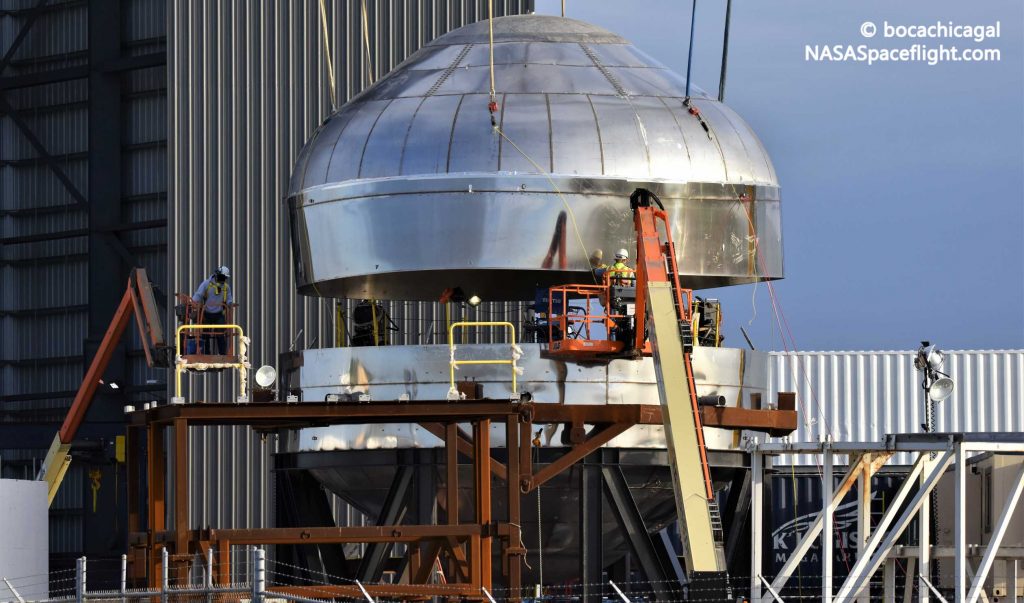
Given that the 7.1 bar the test tank reached is more than enough to support “orbital flight”, albeit with a less-than-optimal safety margin, it would be reasonable to assume that SpaceX would choose to immediately green-light the first flightworthy Starship spacecraft, deemed SN01 (serial number 01) by Musk. While that first prototype would thus be unable to launch humans and fulfill its ultimate goal as a Starship, it would give SpaceX experience building a second full-scale prototype (following Mk1) and give the company time to gradually upgrade its production facilities and manufacturing hardware.
Musk sketched out a number of possible improvements even before SpaceX tested its miniature Starship tank to destruction, indicating that “more precise parts” and an enclosed, wind-protected welding shop should be enough to raise Starship’s safety margin to ~40%. A step further down the road, Musk raised autogenous laser welding as a possibility for future production upgrades, although the advanced welding method would require a truly controlled environment and much more precise parts and manufacturing hardware.
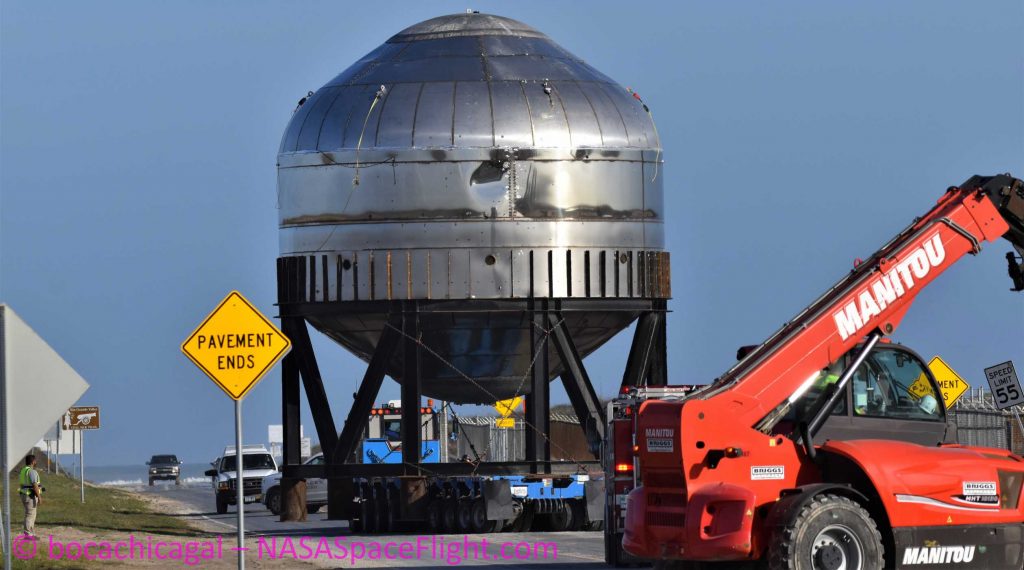
In the last 24 hours, SpaceX has filed for a number of road closures for the highway adjacent to its Boca Chica Starship facilities, a sign that some form of rocket hardware transport and testing is imminent. As such, it now seems much more likely that SpaceX has decided to spend at least a few more weeks building and testing a second (and possibly a third) Starship tank prototype before kicking off the production of the next full-scale rocket.
Intriguingly, SpaceX has also received several large shipments of liquid nitrogen (LN2), a neutral cryogenic fluid often used to simulate cryogenic propellants without risking a massive explosion or fire. That LN2 wont last forever in SpaceX’s storage tanks, confirming that some form of cryogenic testing is imminent. The most likely explanation is that SpaceX is in the late stages of manufacturing a second tank prototype, soon to be shipped about a mile down the road to the company’s nearby test and launch facilities.
If SpaceX is planning to perform a burst test with liquid nitrogen, it will likely be quite the spectacle – much closer to Starship Mk1’s spectacular failure than the milder demise of the first miniature Starship tank. SpaceX has roadblocks scheduled every day for the rest of the week, so stay tuned to find out when exactly Starship’s next big test is expected.
Check out Teslarati’s Marketplace! We offer Tesla accessories, including for the Tesla Cybertruck and Tesla Model 3.

News
Tesla dominates in the UK with Model Y and Model 3 leading the way

Tesla is dominating in the United Kingdom so far through 2025, and with about two weeks left in the year, the Model Y and Model 3 are leading the way.
The Model Y and Model 3 are the two best-selling electric vehicles in the United Kingdom, which is comprised of England, Scotland, Wales, and Northern Ireland, and it’s not particularly close.
According to data gathered by EU-EVs, the Model Y is sitting at 18,890 units for the year, while the Model 3 is slightly behind with 16,361 sales for the year so far.
The next best-selling EV is the Audi Q4 e-tron at 10,287 units, lagging significantly behind but ahead of other models like the BMW i4 and the Audi Q6 e-tron.
GOOD NEWS 🇬🇧 Tesla is absolutely crushing the UK electric vehicle market in 2025 💥
The numbers are in, and the dominance is clear. With an impressive amount of 42,270 vehicles delivered year-to-date, the brand now commands a solid 9.6% market share of the total auto market 🆒… pic.twitter.com/dkiGX9kzd0
— Ming (@tslaming) December 18, 2025
The Model Y has tasted significant success in the global market, but it has dominated in large markets like Europe and the United States.
For years, it’s been a car that has fit the bill of exactly what consumers need: a perfect combination of luxury, space, and sustainability.
Both vehicles are going to see decreases in sales compared to 2024; the Model Y was the best-selling car last year, but it sold 32,610 units in the UK. Meanwhile, the Model 3 had reached 17,272 units, which will keep it right on par with last year.
Tesla sold 50,090 units in the market last year, and it’s about 8,000 units shy of last year’s pace. It also had a stronger market share last year with 13.2 percent of the sales in the market. With two weeks left in 2025, Tesla has a 9.6 percent market share, leading Volkswagen with 8 percent.
The company likely felt some impact from CEO Elon Musk’s involvement with the Trump administration and, more specifically, his role with DOGE. However, it is worth mentioning that some months saw stronger consumer demand than others. For example, sales were up over 20 percent in February. A 14 percent increase followed this in June.
News
Tesla Insurance officially expands to new U.S. state
Tesla’s in-house Insurance program first launched back in late 2019, offering a new way to insure the vehicles that was potentially less expensive and could alleviate a lot of the issues people had with claims, as the company could assess and repair the damage itself.
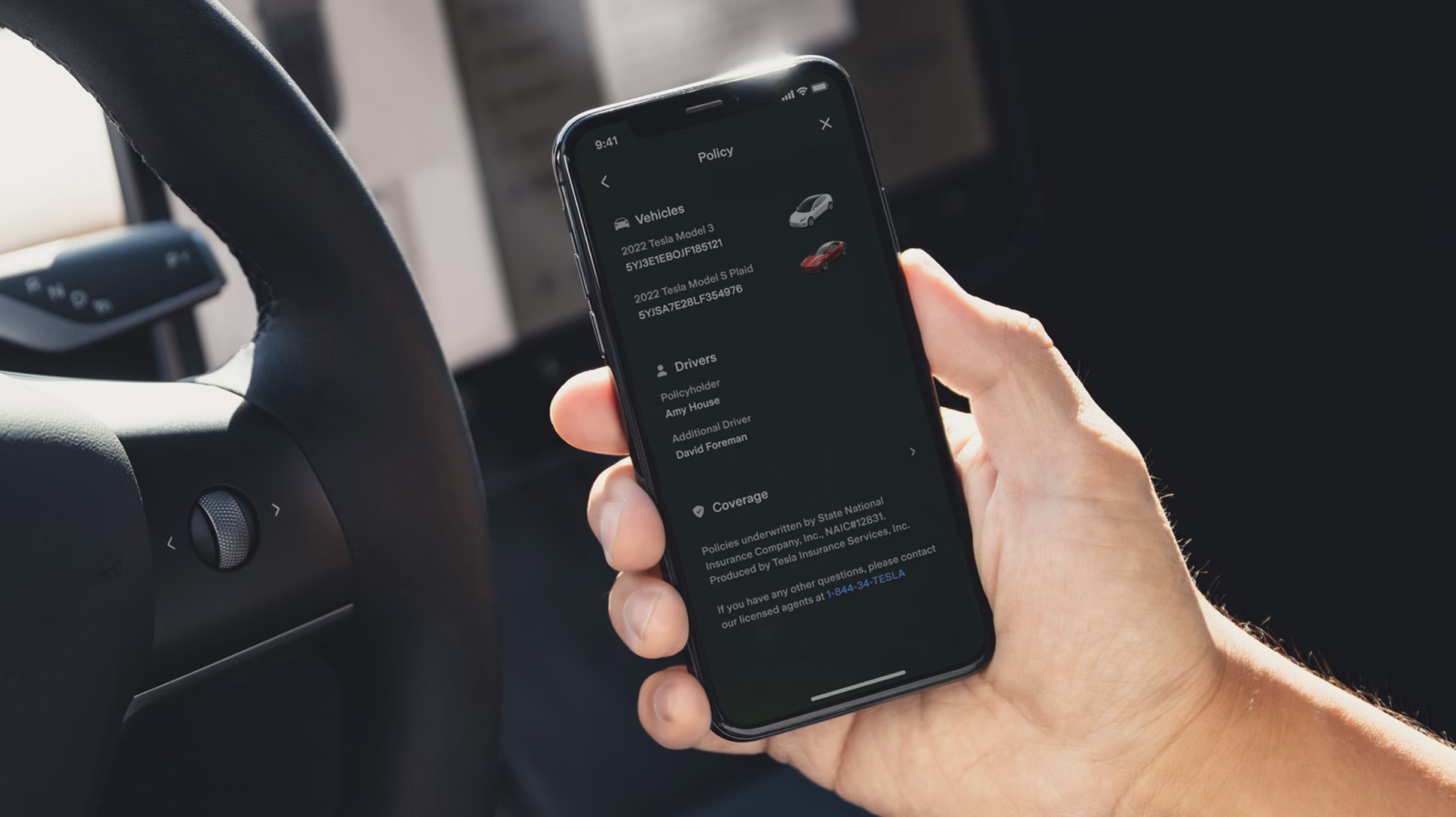
Tesla Insurance has officially expanded to a new U.S. state, its thirteenth since its launch in 2019.
Tesla has confirmed that its in-house Insurance program has officially made its way to Florida, just two months after the company filed to update its Private Passenger Auto program in the state. It had tried to offer its insurance program to drivers in the state back in 2022, but its launch did not happen.
Instead, Tesla refiled the paperwork back in mid-October, which essentially was the move toward initiating the offering this month.
BREAKING: Tesla Insurance has just officially launched in Florida.
This is the first new state to receive @Tesla Insurance in more than 3 years. In total, Tesla insurance is now available in 13 U.S. states (map in thread below of all the states).
Tesla Insurance in Florida uses… pic.twitter.com/bDwh1IV6gD
— Sawyer Merritt (@SawyerMerritt) December 17, 2025
Tesla’s in-house Insurance program first launched back in late 2019, offering a new way to insure the vehicles that was potentially less expensive and could alleviate a lot of the issues people had with claims, as the company could assess and repair the damage itself.
It has expanded to new states since 2019, but Florida presents a particularly interesting challenge for Tesla, as the company’s entry into the state is particularly noteworthy given its unique insurance landscape, characterized by high premiums due to frequent natural disasters, dense traffic, and a no-fault system.
Annual average premiums for Florida drivers hover around $4,000 per year, well above the national average. Tesla’s insurance program could disrupt this, especially for EV enthusiasts. The state’s growing EV adoption, fueled by incentives and infrastructure development, aligns perfectly with Tesla’s ecosystem.
Moreover, there are more ways to have cars repaired, and features like comprehensive coverage for battery damage and roadside assistance tailored to EVs address those common painpoints that owners have.
However, there are some challenges that still remain. Florida’s susceptibility to hurricanes raises questions about how Tesla will handle claims during disasters.
Looking ahead, Tesla’s expansion of its insurance program signals the company’s ambition to continue vertically integrating its services, including coverage of its vehicles. Reducing dependency on third-party insurers only makes things simpler for the company’s automotive division, as well as for its customers.
News
Tesla Full Self-Driving gets sparkling review from South Korean politician
“Having already ridden in an unmanned robotaxi, the novelty wasn’t as strong for me, but it drives just as well as most people do. It already feels like a completed technology, which gives me a lot to think about.”
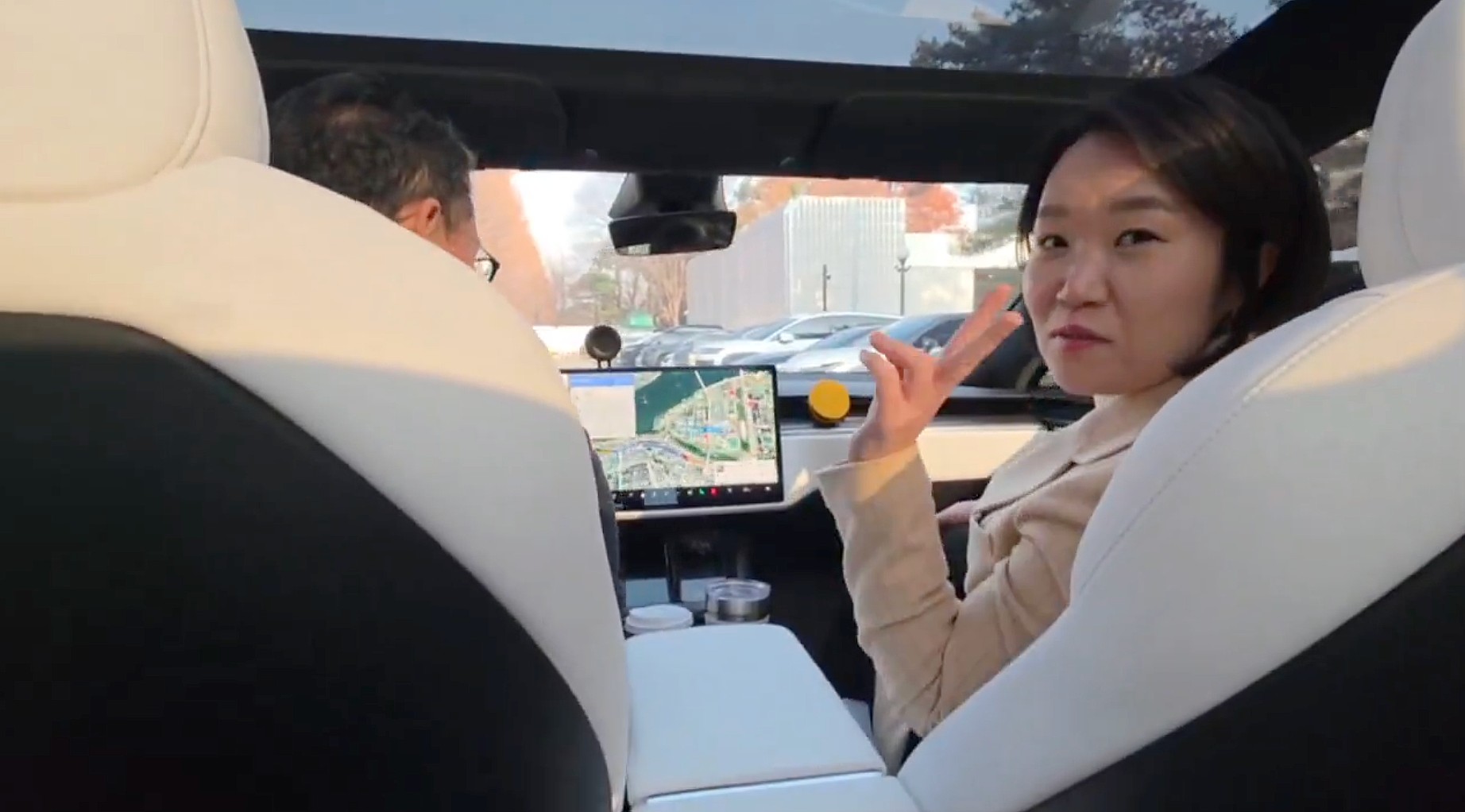
Tesla Full Self-Driving got its first sparkling review from South Korean politician Lee So-young, a member of the country’s National Assembly, earlier this week.
Lee is a member of the Strategy and Finance Committee in South Korea and is a proponent of sustainable technologies and their applications in both residential and commercial settings. For the first time, Lee was able to utilize Tesla’s Full Self-Driving technology as it launched in the country in late November.
Her thoughts on the suite were complimentary to the suite, stating that “it drives just as well as most people do,” and that “it already feels like a completed technology.”
드디어 오늘, 서울에서 테슬라 FSD 체험 했습니다.
JiDal Papa님의 모델S 협찬에 힘입어^^ 파파님 정말 감사합니다.
국회 -> 망원시장 -> 홍익대 -> 국회 복귀 코스였고요.
이미 무인 로보택시를 타봐서 그런지 신기함은
덜했지만, 웬만한 사람만큼 운전을 잘하네요.이미 완성된 기술이라고… pic.twitter.com/8pAidHBpRG
— 이소영 국회의원 (Soyoung Lee) (@im_soyounglee) December 17, 2025
Her translated post says:
“Finally, today I got to experience Tesla FSD in Seoul. Thanks to the Model S sponsored by JiDal Papa^^, I’m truly grateful to Papa. The route was from the National Assembly -> Mangwon Market -> Hongik University -> back to the National Assembly. Having already ridden in an unmanned robotaxi, the novelty wasn’t as strong for me, but it drives just as well as most people do. It already feels like a completed technology, which gives me a lot to think about. Once it actually spreads into widespread use, I feel like our daily lives are going to change a lot. Even I, with my license gathering dust in a drawer, don’t see much reason to learn to drive a manual anymore.”
Tesla Full Self-Driving officially landed in South Korea in late November, with the initial launch being one of Tesla’s most recent, v14.1.4.
It marked the seventh country in which Tesla was able to enable the driver assistance suite, following the United States, Puerto Rico, Canada, China, Mexico, Australia, and New Zealand.
It is important to see politicians and figures in power try new technologies, especially ones that are widely popular in other regions of the world and could potentially revolutionize how people travel globally.








